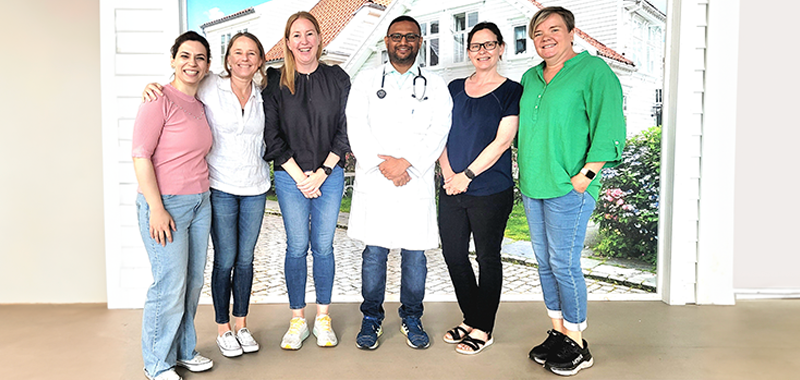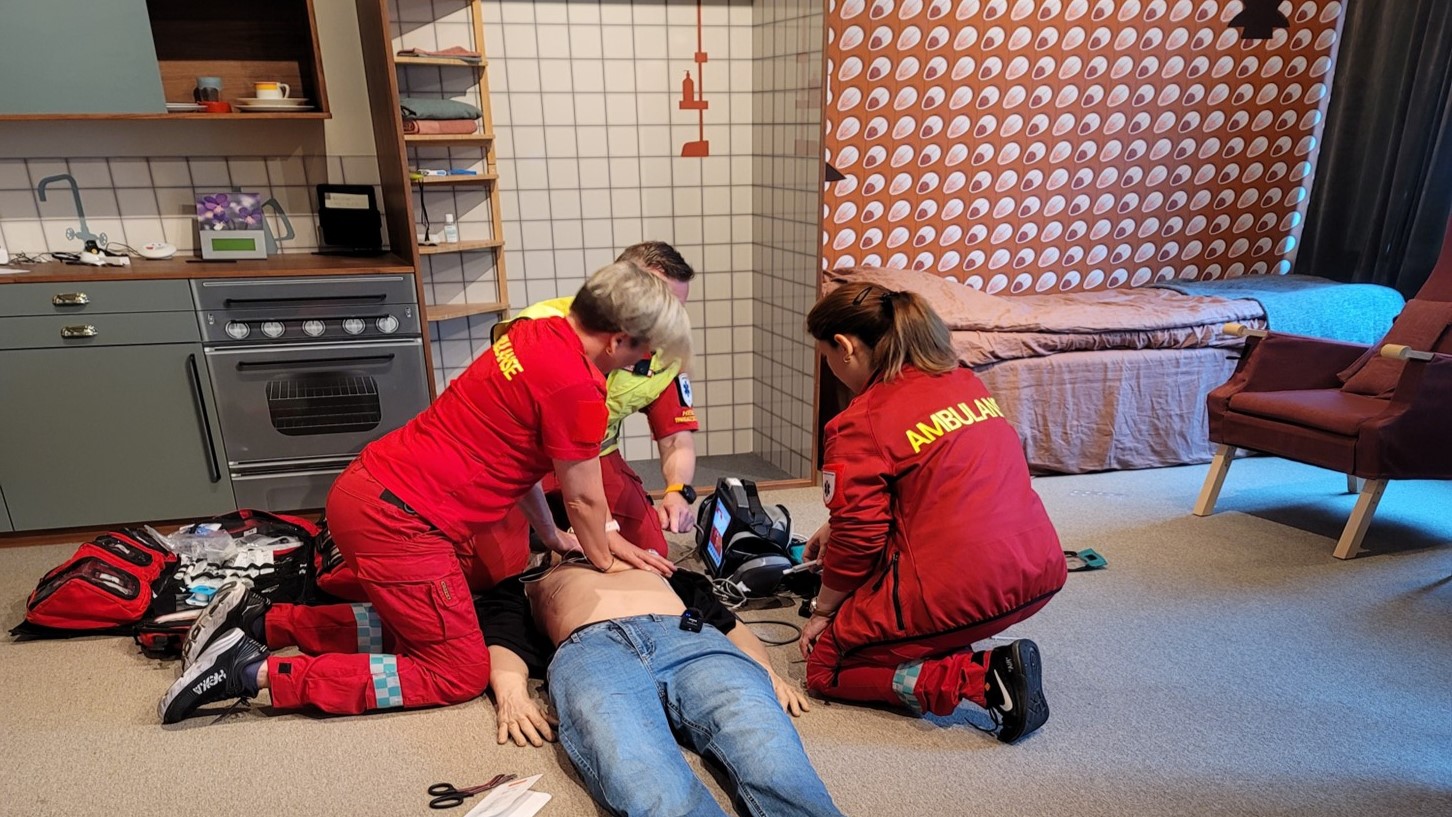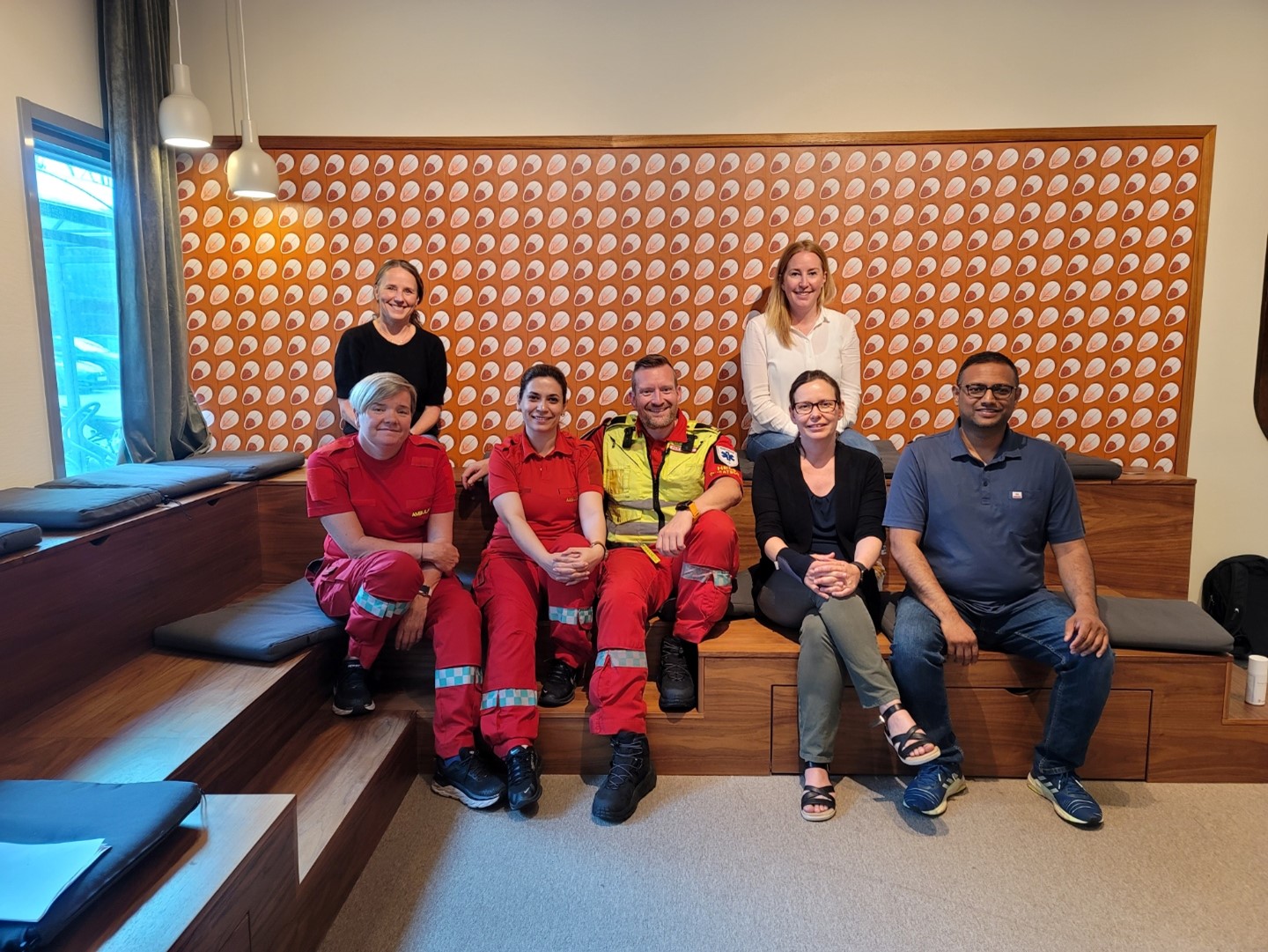
I had an opportunity to participate in the SAFETY project. I worked in the development of practical e-learning modules – Turning training materials into e-learning courses. More specifically, my team produced different simulation scenarios related to medical education for the participants of this project. Emergency physicians, medicine and cardiology specialists, paramedics, and the Emergency Medical Service (EMS) crew were included in my group. The simulation scenarios were filmed during a three-day working session in the locations of HelseCampus Stavanger in June 2023. The learning outcomes of this session are expected to add significant value to the ongoing SAFETY project, although the number of simulated scenarios was limited.
What we learned
Match the material to the learners
Participants are different, with different interests, prerequisites, and enthusiasm for simulation. They are part of different study programs and have different experience levels. In order to maximize the learning outcome, those designing simulations should know their target group well. Therefore, in the SAFETY project, I and some colleagues, were involved in the design and conduct of the scenario. We wanted to make sure, as much as we can that they match our reality. But it is also about preparing the students to take part. Explaining, what simulation is about, what role the teachers play, and what role the learners. It is the interplay between both groups that help in getting the most out of simulation.
Customization of training and comprehensive understanding
Simulation training should be customized considering different emergency medical situations. Learning outcomes are expected to be comprehensive for participants, which will be effective for future clinical practice. They can include, for example, issues of diagnosing patients, finding and implementing the right life-saving treatment, switching over to a cause-oriented approach after the highly acute phase – all while considering cognitive and social aspects of implementing complex procedures together with others.
Training objectives and knowledge about resources
Before starting any simulation training, medical professionals (trainers and trainees) should have adequate knowledge about training objectives and available resources. During simulation sessions it can become clear, that some participants might lack an ability to use certain terms and implement certain procedures – or that it can be difficult to orient oneselve in the environment. A comprehensive pre-training briefing can be a solution to facilitate the effective conduct of simulation.
Scope of implementation of simulation training and self-motivation
Only performing standard simulation training is not adequate to improve quality of medical care during emergency situations. From my experience in the Sultanate of Oman, I discovered many participants completed simulation training successfully but could not implement revised and improved knowledge in their clinical practice due to limited support of such ideas in the clinical practice. Self-esteem is another critical factor that was frequently marked suboptimal during the management of medical emergencies – do I dare to try the new things that I learned? Lack of initiative to implement simulation expertise was frequently noticed due to fear of legal issues.
Monitoring and periodic assessment of simulation training outcomes
Close monitoring for the implementation of achieved skills from simulation training in the respective field is essential to ensure standard practice in clinical fields. From my field experience in Bangladesh, inadequate monitoring was noticed due to the unavailability of experts.
Periodic assessment of previously obtained knowledge of healthcare professionals from simulation training is crucial. The interval of this type of evaluation can be fixed considering the resources of individual healthcare systems. The result of this investigation is one of the critical indicators of achieving the simulation campaign’s goal. Assessment of standard medical care before and after simulation training can explore the program’s effectiveness and determine the areas of improvement.
Feedback
Feedback from trainees and trainers is critical after performing any training session. It will help to evaluate both groups’ performance and guide them to improve in conducting future medical education courses. In Norway, pre and post-training feedback is routinely practiced. However, there needed to be more reporting feedback in other areas of the world.
Cost-effectiveness
Before designing any medical simulation course, the cost-effectiveness of that program should be considered carefully. Many simulation training programs turned unsuccessful due to insufficient financial support and resources.
Checklist
Adding a checklist is a unique idea for both demonstrators and learners of simulation training. While developing e-learning modules for the SAFETY project at the University of Stavanger, Norway, I had noticed lack of availability and use of formal checklists, especially during making particular clinical scenarios. Checklists are also essential while scrutinizing individual trainee’s performance during a simulated situation.
Pros and Cons of Medical Simulation
We should carefully assess the pros and cons of medical simulation while designing a framework for training. The following factors may be considered:
- How can simulation and clinical training play together?
- Can simulation improve the skills of healthcare providers to the optimum level?
- Can simulation ensure better healthcare for patients?
- Is simulation consuming more valuable time and resources of healthcare professionals compared to the outcome benefits?
In brief, inter-discipline coordination is required to set up a common standard protocol of simulation training for managing medical emergencies that can be practiced comprehensively in different levels of healthcare services. The SAFETY project may serve as an example of how to achieve simulation-based training goals in the domain of emergency medicine across diverse European healthcare systems.
Written by Tanvir Rahman and the UiS Team





